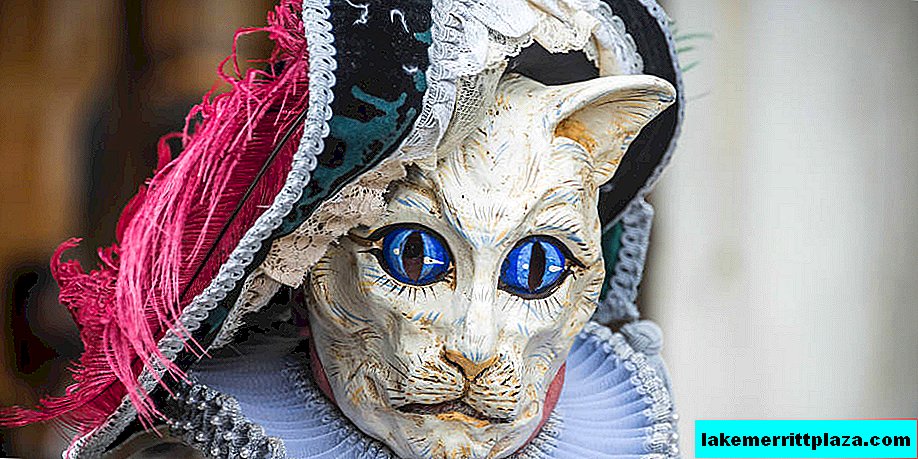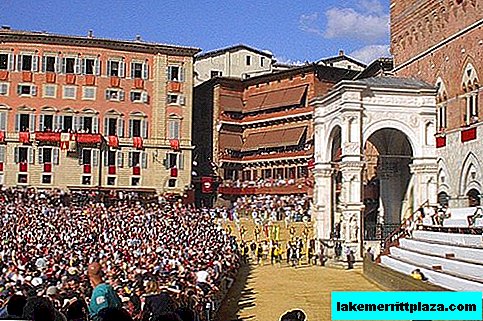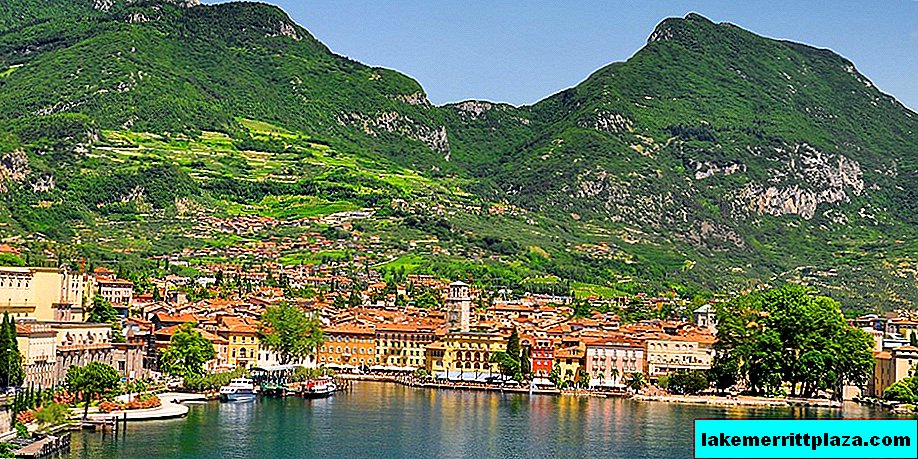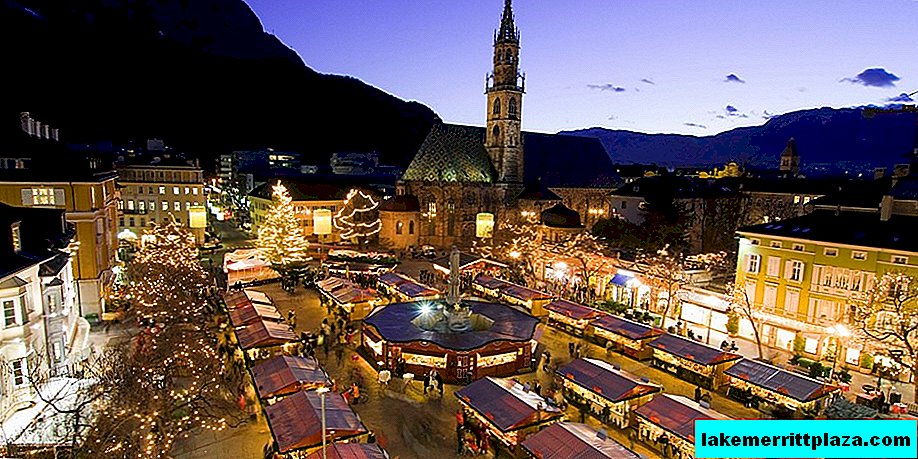The Roman she-wolf is a symbol of the city of Rome, a sculptural image of an animal feeding the twins Romulus and Remus, according to legend, who founded Rome. The she-wolf in Rome has long been called the "mother of the Romans", and after the statue was transferred at the end of the 15th century to the Capitoline Palace, the name “Capitoline Wolf” (Lupa Capitolina) was fixed.

The capitoline she-wolf is the main character of the legend of the founding of Rome, which tells of the semi-divine origin of the twin brothers Romulus and Remus.
They were the grandchildren of Numitor, the ruler founded by the Trojans of the city of Alba Long. His younger brother Amulius, having seized power, dealt with the children of Numitor: he killed his son, and his daughter, Ray Sylvia, forced him to take a vow of celibacy and become a priestess of the temple of Vesta - vestal. but four years later, Ray Sylvia gave birth to twin boys from the fertility god of Mars.

Enraged Amulius, fearing revenge, ordered the execution of his niece, and her children drowned in the Tiber. The slave complied with his order - he carried the babies to the banks of the spilling river and left a basket there in the hope that the water would catch them and destroy them, but he miscalculated. The water was gone, the hungry twins cried out, they were heard by a she-wolf, who was nearby, licked and fed her milk. She came to look after the children who had taken refuge in the shade of the fig tree until came across a shepherd who raised them and gave names - Romulus and Remus.

The boys grew up as skilled warriors, but once as a result of a battle they were captured by their grandfather. When their origin was revealed, they helped him regain power in Alba Longa, and they themselves agreed to establish a city on the Palatine Hill (Palatium) - where the Tiber once threw them ashore.
Cave
In support of the legend, in 2007 in Rome, on the Palantine, right under the ruins of the palace of the emperor Augustus, archaeologists found a cave where supposedly there were children fed by a she-wolf.

It is established that this is the location of the famous Lupercale temple (Lupercale, from the Latin lupa - she-wolf), dedicated to Romulus and Remus. The monument of antiquity - a grotto with a diameter of 7.5 and a height of 8 meters - was found at 16-meter depth with half-buried earth. Because of the danger of collapse, research was carried out using probes and video equipment, but after the work, which cost 12 million euros, some sites were opened for visitors. It is this point that is taken as the place of foundation of Rome.
The statue
The statue, cast in bronze, is an image of a standing she-wolf 75 cm high, with a bared mouth, forepaws resting on the ground. Under her belly, two babies stretch to her nipples - Romulus and Remus.
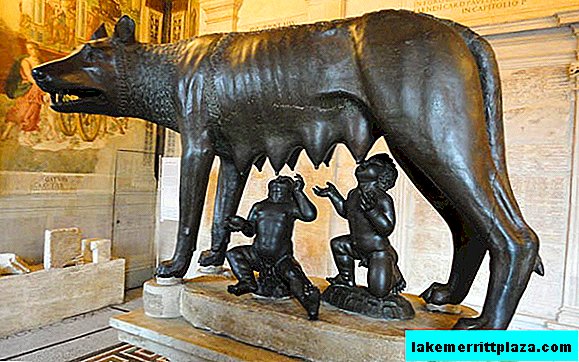
Capitoline she-wolf, but without babies, is mentioned in documents from ancient times. It was long believed that it was cast in the 5th century BC. e. Etruscans, then it was established in Rome as a sign of the union of the Romans, Sabines and Etruscans. However, the latest research conducted in 2006 by the restorer Anna Maria Karruba, shifted the moment of the creation of the statue in the VIII-X centuries of our era.

The figures of the twins are clearly cast in a different style and appeared at the nipples of the she-wolf in the late 15th century. The author named sculptor Antonio del Pollayolo.

From the notes of the tenth century, which belong to the pen of the chronicler-monk Benedict, it is known that the capitoline wolf stood in the Lateran Palace at the place of the court. It was not a monument, but rather a deity - the "mother of the Romans", watching the behavior of their children. Mention of the wolf’s courts and executions occurs until the middle of the 15th century. In 1473, Sixtus IV ordered the statue to be transferred to the Capitol, in the Palazzo dei Conservatori, where it is still located.
Monument and copies

The Wolf Monument is a copy of the famous sculpture, mounted on a high column to the left of the central building of the Capitoline Museum and the city hall. Similar monuments can be found in other places in Rome, as well as around the world:
- in Pisa (Tuscany region, Italy) a monument can be found between the leaning tower and the Cathedral of Pisa;
- they are installed in the Latin Quarter of Paris, in the Spanish Segovia;
- in many cities of Romania - here it is a symbol of cultural heritage;
- near the Olympic Stadium in Tokyo, Japan;
- next to the memorial to Juscelino Kubitschek in the capital of Brazil, the city of Brasilia;
- in the United States, where copies of the sculpture sent by dictator Benito Mussolini are installed in Eden Park (Cincinnati), in Rome (Georgia), and in New York.
Symbol of rome
The she-wolf in Rome is not just a statue or monument, it is a symbol of the divinity of origin of the “eternal city”. Therefore, her images are present everywhere, the most ancient can be seen on the coins found during archaeological excavations. The she-wolf is also a symbol of the football club Roma, is depicted on the coat of arms.

It is known that a great admirer of the she-wolf was Benito Mussolini. For him, she was a symbol of the desire to revive the Roman Empire, he sent copies of the "mother of the Romans" around the world.
We recommend visiting: excursion to the Capitoline Museums with a licensed guide in Rome and the Vatican Elena Vyaznikova
How to get there
The capitol wolf is originally presented at the Palazzo dei Conservatori, in the Capitol Museum at Piazza del Campidoglio, 1. It is located on Capitol Hill near Piazza Venezia and the Roman Forum (Foro Romano), the nearest metro station is Colosseo.
- Official site of the Capitoline Museum: www.museicapitolini.org



